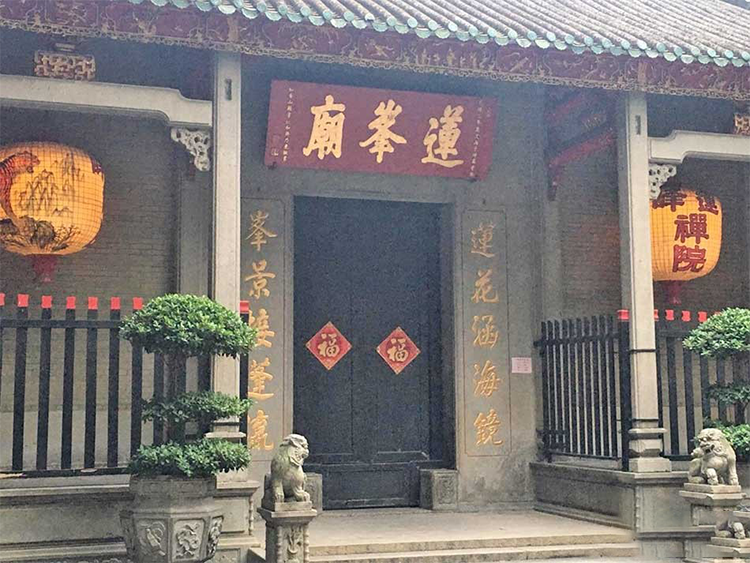Discover Lianfeng Temple: Macau Heritage, Mazu and East-West Culture
Introduction: Four Centuries of Devotion in Macau’s Unique Faith Fusion
Hidden in the alleys of Macau Peninsula’s northern district, a modest gray‑tiled temple has stood for 400 years—Lianfeng Temple, one of Macau’s three oldest temples. It is both a sacred site of Mazu worship and a living testament to the city’s cultural blending. Here, Lingnan timber carving and painted beams sit alongside Portuguese architectural details; the compassionate gaze of the Tianhou (Mazu) statue shares a roof with the stern figure of Guan Yu; morning sutra recitation and distant church bells form a one‑of‑a‑kind soundscape.
Part of the UNESCO-listed Historic Centre of Macau, Lianfeng Temple is more than a place of worship: it’s an open history book that records the prosperity of the Maritime Silk Road. Whether you are a culture seeker, architecture lover, or a traveler in search of quiet reflection, this temple’s aged restraint and tolerant spirit will leave an impression.
1. The Soul of Lianfeng Temple: Mazu Worship and an East‑West Relic
One‑line summary: One of Macau’s most active Mazu shrines, where Lingnan architecture blends gracefully with Portuguese accents—an historic treasure in a UNESCO zone.
Lianfeng Temple was founded in 1622 during the Ming dynasty as a sanctuary for fishermen praying for safe voyages and honors Tianhou (Mazu) as its principal deity. Macau’s long seafaring and trading history made Mazu devotion deeply rooted here. What makes Lianfeng Temple distinctive is how the traditional Chinese temple absorbed Portuguese colonial details—arched door frames and decorative tiles—resulting in a hybrid aesthetic: Chinese core, Western flourishes.
Cultural status:
– One of Macau’s three major ancient temples (alongside A-Ma Temple and Pou Tai Temple).
– Included in the 2005 inscription of the Historic Centre of Macau as a World Heritage site.
– A local center of blessing, particularly revered by fishermen and merchants.
2. Architectural Highlights: A Dialogue Between Lingnan Craft and Portuguese Detail
(1) Lingnan style meets Portuguese accents
Lianfeng Temple is fundamentally a Lingnan temple—gray bricks, black roof tiles, upturned eaves—but close inspection reveals Portuguese‑style arch motifs on door frames and colorful glazed tiles. This accidental cultural fusion captures Macau’s layered past.
(2) Layout and sacred spaces
– Mountain gate: A plaque reads “Lianfeng Temple” and stone lions guard the entrance in traditional Chinese fashion.
– Front hall: Houses Wei Tuo (guardian deity); murals here depict Mazu rescuing sailors.
– Main hall: The temple’s core, featuring a nearly 2‑meter gilded statue of Tianhou with a serene expression. Side halls enshrine Guanyin and Guan Yu, reflecting the syncretic nature of folk belief.
– Rear courtyard: A quiet garden with a Qing dynasty bronze bell and steles documenting restoration work.

Artistic highlights:
– Main hall Tianhou statue: Ming‑style robes and exquisite craftsmanship.
– Qing dynasty bronze bell: Inscribed with texts that recall the era’s maritime trade.
– Murals and steles: Historical records and artistic displays of successive repairs.
3. Immersive Experiences: Daily Rituals and the Mazu Birthday Festival
(1) Daily religious life
– Early morning chanting by resident monks—visitors may observe quietly.
– Devotees come to burn incense and draw fortune sticks, especially seeking maritime safety or prosperous trade.
(2) Annual highlight: Mazu’s birthday
On the 23rd day of the third lunar month, the temple hosts grand ceremonies:
– Dragon and lion dances, and processions carrying deity statues through the neighborhood.
– Offerings of flowers and fruit; evening performances of Cantonese opera.
– Visitor tip: Expect large crowds—arrive early for a good spot and to experience authentic local ritual.
(3) How to participate
– Burning incense: The temple offers eco‑friendly incense—three sticks is customary. First pay respects to the main hall Tianhou, then the side halls.
– Offering a lamp: Make a donation and write your wish on a lamp card.
– Etiquette: Keep voices low and avoid pointing at statues.
4. Atmosphere: A Quiet Nook Amid Urban Life
– Visitors: Mostly local middle‑aged and elderly devotees; few tourist groups—an intimate, unadorned atmosphere.
– Best time to visit: Early morning or late afternoon when angled light casts patterned shadows through carved windows—ideal for photography.
– Setting: Although surrounded by busy streets, the temple’s walls and towering trees block the noise; incense smoke and birdsong create a meditative pause.

5. Practical Itinerary Suggestions
– Suggested visit length: 1 hour. Allow up to 2 hours for detailed study or participation in services.
– Ideal for: Cultural exploration, architecture photography, and learning about folk religion.
– Nearby combination: Morning at Lianfeng Temple, a 10‑minute walk to the Lin Zexu Memorial for Opium War history; afternoon by bus to the Ruins of St. Paul’s to continue your World Heritage tour.
6. Practical Tips
– Dress code: No strict requirement, but avoid shorts and bare shoulders as a sign of respect.
– Photography: Photographs allowed; do not use flash inside the main hall.
– Opening hours: 08:00–18:00. Free admission.
– Transport:
– Bus: Take routes 1, 3 or 10 to the “Lianfeng Temple” stop.
– Walk: About 15 minutes from Gongbei Port.
– Language: Signs are in Chinese and Portuguese; temple clergy speak Cantonese and Mandarin.
– Payments: Donation and incense offerings are cash only (MOP/HKD).
Conclusion: Reading Macau’s Spirit at Lianfeng Temple
This modest temple does not shine with gaudy displays; it glows with the patina of time. As both guardian of Mazu devotion and a living example of Macau’s East‑meets‑West identity, Lianfeng Temple reveals that the city’s most compelling sights are not just neon lights, but the cultural coexistence found in its neighborhoods. Will you let your next stop be this quiet 400‑year refuge?


